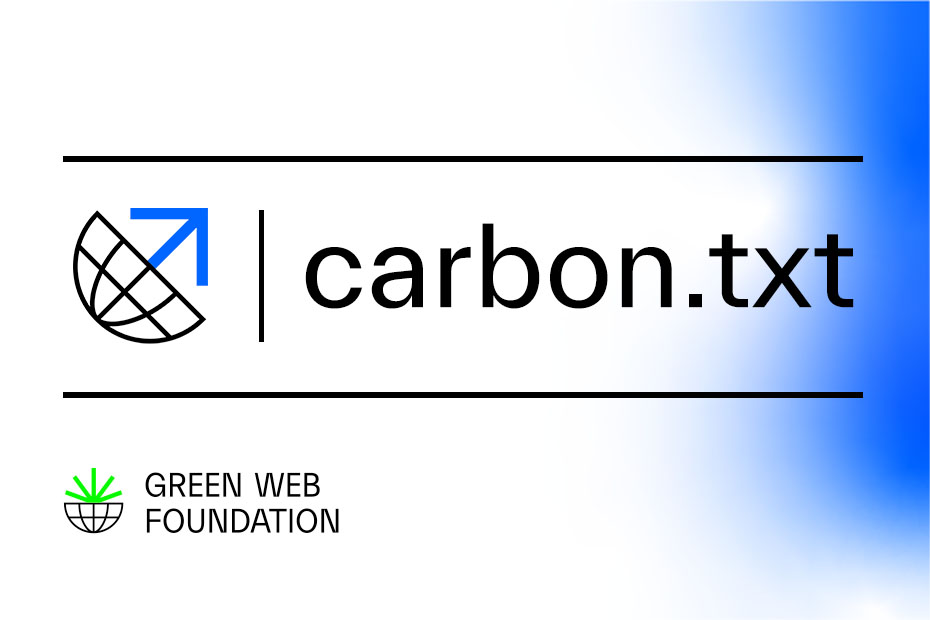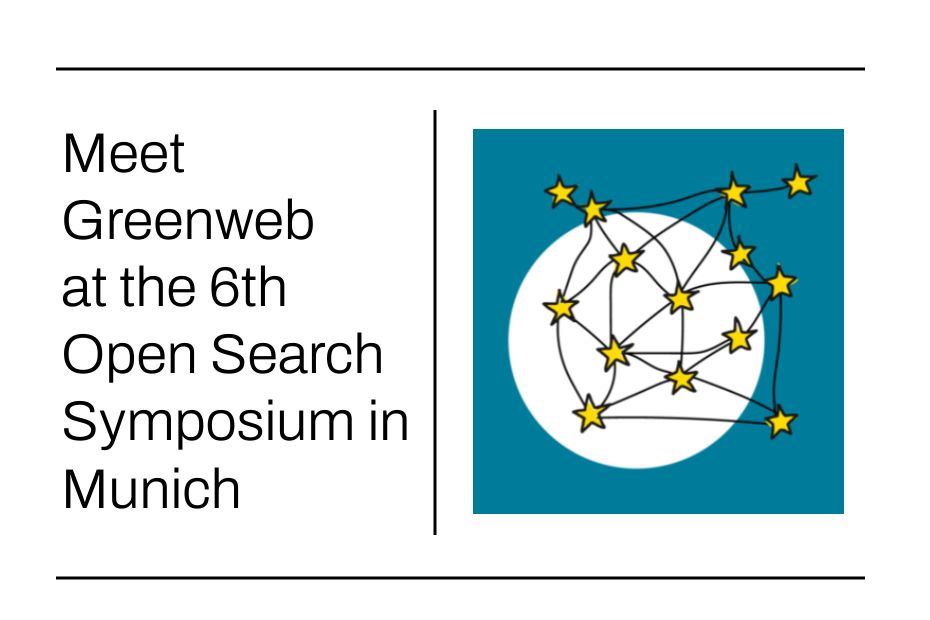In this post we explain how our latest project, carbon.txt, can be combined with the Technology Carbon Standard (TCS) to create greater transparency in the field of digital sustainability. We cover how we collaborated with the sustainability team at Scott Logic, the driving force behind TCS, to simplify digital estate emissions reports through developing an initial TCS Schema. We also provide practical advice on how to get started.
We want TCS data to be easily retrievable by other systems for digesting, parsing, benchmarking and most crucially; transparency. This is exactly the value we see carbon.txt providing, and it allows us to focus our resources on getting the best possible data created in the first place.

Oliver Cronk – Technology Director – Scott Logic
Addressing sustainability problems with the Technology Carbon Standard (TCS)
The Technology Carbon Standard (TCS) supports organisations to act on the carbon emissions of their digital technology estate through providing a standardised way to model their use of digital technologies. Through applying the model digital emissions can be estimated leading to identification of opportunities for making reductions.
The proposed standard is open source under a CC BY-SA 4.0 license. It takes inspiration from the globally recognised GHG Protocol and its emission classification of scopes 1, 2, and 3.
As more organisations use TCS, consistent analysis and benchmarking of digital carbon footprints across different organisations becomes possible. Such consistency facilitates productive conversations between sustainability stakeholders, technology leadership and practitioners to identify common problems and resolve them at a systemic level, with a view to reducing the emissions as a sector.
What types of sustainability data are produced via the TCS?
The TCS enables a categorised mapping of IT assets, infrastructure and services in a digestible format for technology, sustainability and executive roles. Each TCS category provides an emissions value in kg CO₂equivalent aligned to GHG scopes.
The categories are based on generally accepted methodologies and available tools which are documented in the standard. Each TCS category breaks down into granular details for ease of organising and identifying emissions mitigation opportunities.
TCS structured, machine-readable formats
Many organisations are already sharing TCS digital emission metrics, but often buried in .pdf reports, and inconsistently reported. This means the data is hard to find and compare to benchmarks. The TCS Schema has been developed in collaboration with Scott Logic, the driving force behind the TCS and the carbon.txt team at Green Web Foundation to address this.
The schema is designed to make it easy to present digital emissions estimates data, produced as a result of applying the TCS model to an organisation, in a structured, machine-readable format.
The schema uses a JSON data format – a very common and well understood approach for transmitting data across a network – maximising accessibility. The JSON data structure, data types and popularity provide a solid foundation for enabling TCS data to become easily retrievable by other systems for digesting, parsing, benchmarking and most crucially; transparency.
How carbon.txt and TCS support each other’s goals
Carbon.txt makes sustainability data easier to discover and use on the web. It’s of most benefit to those interested in scraping structured sustainability data and crunching numbers to share the stories it can tell.
TCS aims to improve the process of digital emission quantification and transparency to spur more targeted, impactful efforts to reduce tech-related emissions.
Bubbling up the raw data in a consistent structure, in a consistently accessible location enables the lookup of this data for full transparency and disclosure. It also demonstrates the credibility of an organisation’s sustainability efforts through supporting the principle of “openness as a key indicator for sustainability“.
The goals of these two projects overlap strongly through key shared themes such as data discoverability, accessibility and transparency.
How to use TCS and carbon.txt together
Together the two tools make it possible for anyone to share public disclosures of TCS digital emissions estimates and for others to make use of the data. This creates much needed transparency in the field of digital estate emissions reporting, a precursor to unlocking meaningful systemic emission reductions.
For any organisation wishing to give it a go, follow these steps:
- Model your organisation’s digital estate using the TCS categories.
- Produce digital emissions estimates.
- Place the key data points from the estimates into a tcs.json file, following the TCS Schema, and make it available publicly in a location controlled by you.
- Create a carbon.txt file disclosing the location of your tcs.json file and validate it.
- Publish your carbon.txt file at one of the recommended locations on your website.
An example
We used the TCS to model and estimate Green Web Foundation’s digital estate in 2023, documented in this case study.
We took the key data points from those estimates and turned them into our own tcs.json file using v0.0.1 of the TCS Schema. You can find our TCS Schema GitHub repository where we manage this file and validate it using the in-built VSCode JSON schema tools.
Lastly, you can see the resulting tcs.json file disclosed in our own public carbon.txt file, along with a separate disclosure that details the decisions, methodology and learning points from producing these estimates.
Getting started
Begin with small actions. It’s a great first step to link any existing sustainability data your organisation already has in a single, discoverable place using a carbon.txt file, even if the data within is not perfect or standardized. This is exactly what we did with our first carbon.txt file!
You can continually update your carbon.txt file as your reporting or data standardisation processes mature – that’s the beauty of the web.
If you are lost in the process and have questions, help is always available. Contact us!
Advice from a seasoned practitioner
We asked David Rees, Scott Logic’s Sustainable Technology Lead, what advice he’d give someone who wants to estimate their organisation’s digital emissions and share them in a carbon.txt file.
“Persevere. Estimating your organisation’s emissions isn’t a once and done deal. It’s a committed process that evolves, develops and matures over time. Don’t expect perfection and accuracy when starting out, a rough estimate with whatever data and assumptions you have is better than no estimate, because there are limits where data simply isn’t obtainable or meaningful.
The key however is being transparent with your methods, and assumptions and how those figures were calculated. Over time these can be improved and made more accurate and it will uncover further opportunities to reduce emissions. Even a rough estimate across your digital estate can highlight areas to focus on and improve.
Above all, there is a lot of advice and guidance to help you navigate the complexities, tools and methods. It’s one of the fundamental reasons why we developed the Tech Carbon Standard and open-sourced this guidance.
We’ve just launched the TCS Schema, so you can publicly present those results in a consistent structure, see the TCS schema for guidance. Additionally, it’s important to publish the methods (this could be in the form of a case study) that were used to arrive at those emissions figures, this transparency develops trust by not trying to hide anything. And if you have a case study and experience to share, we welcome contributions to the TCS to help others.”
Looking forward to the benefits
Sharing structured TCS data inside a carbon.txt file has the potential to positively impact organisations disclosing data and the digital sustainability sector as a whole.
How do organisations using TCS and carbon.txt benefit?
Organisations sharing their structured digital estate emissions data via a carbon.txt file demonstrate a real commitment to sustainability through being transparent and sharing data in ways others can make sense of, which in turn can positively benefit a brand’s trust.
Many organisations are already sharing sustainability data, but these are often buried in PDF reports and reported inconsistently. I believe that by using the carbon.txt approach to sharing, we are becoming part of something significant—standardising the process of publishing sustainability data in a structured and consistent manner, ensuring discoverability, accessibility, and transparency.

David Rees – Solutions Architect & Sustainable Technology Lead – Scott Logic
How can the digital sector become more sustainable through this approach?
David shares his thoughts on this with us:
“With the transparency and accessibility of this data, the tools and systems that I envision popping up in the future would enable real benchmarking. From comparing and procuring digital services, to success stories of year over year progression of emissions reductions achieved by organisations. I think this could kick-start many further opportunities, such as standardising how organisations share and provide the sustainability impacts of their products and services to customers, improve GHG Scope 3 emissions calculations, and make sustainability a key metric in procurement processes.”
Questions or need support?
If you need help making use of carbon.txt to share your sustainability data our dedicated carbon.txt website is there to help you get started.
If you can’t find what you’re looking for, or would like to explore a collaboration to build tools to scrape data disclosed in carbon.txt files, get in touch through our support form.


